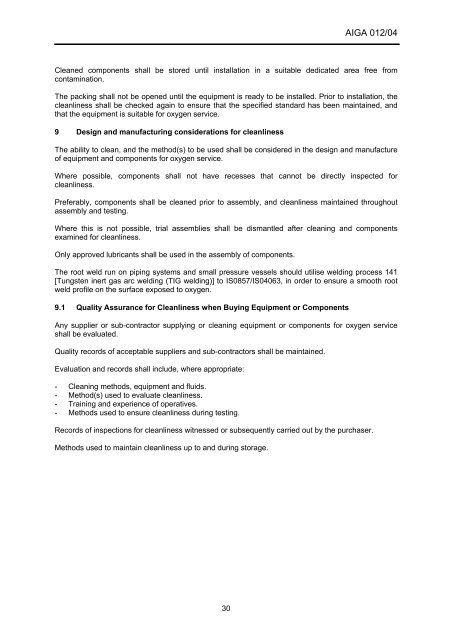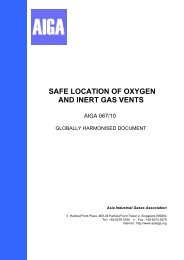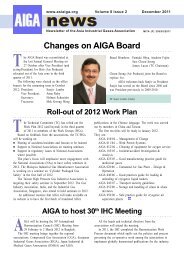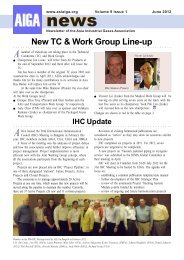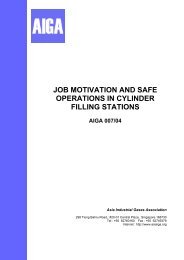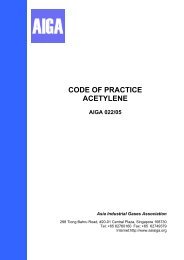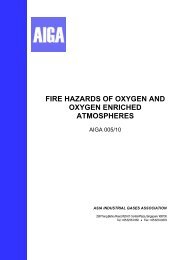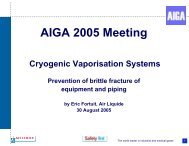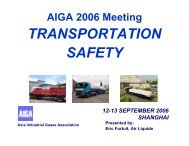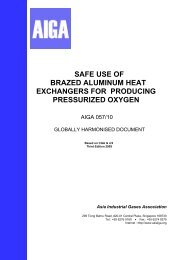CLEANING OF EQUIPMENT FOR OXYGEN SERVICE - AIGA
CLEANING OF EQUIPMENT FOR OXYGEN SERVICE - AIGA
CLEANING OF EQUIPMENT FOR OXYGEN SERVICE - AIGA
Create successful ePaper yourself
Turn your PDF publications into a flip-book with our unique Google optimized e-Paper software.
30<br />
<strong>AIGA</strong> 012/04<br />
Cleaned components shall be stored until installation in a suitable dedicated area free from<br />
contamination.<br />
The packing shall not be opened until the equipment is ready to be installed. Prior to installation, the<br />
cleanliness shall be checked again to ensure that the specified standard has been maintained, and<br />
that the equipment is suitable for oxygen service.<br />
9 Design and manufacturing considerations for cleanliness<br />
The ability to clean, and the method(s) to be used shall be considered in the design and manufacture<br />
of equipment and components for oxygen service.<br />
Where possible, components shall not have recesses that cannot be directly inspected for<br />
cleanliness.<br />
Preferably, components shall be cleaned prior to assembly, and cleanliness maintained throughout<br />
assembly and testing.<br />
Where this is not possible, trial assemblies shall be dismantled after cleaning and components<br />
examined for cleanliness.<br />
Only approved lubricants shall be used in the assembly of components.<br />
The root weld run on piping systems and small pressure vessels should utilise welding process 141<br />
[Tungsten inert gas arc welding (TIG welding)] to IS0857/IS04063, in order to ensure a smooth root<br />
weld profile on the surface exposed to oxygen.<br />
9.1 Quality Assurance for Cleanliness when Buying Equipment or Components<br />
Any supplier or sub-contractor supplying or cleaning equipment or components for oxygen service<br />
shall be evaluated.<br />
Quality records of acceptable suppliers and sub-contractors shall be maintained.<br />
Evaluation and records shall include, where appropriate:<br />
- Cleaning methods, equipment and fluids.<br />
- Method(s) used to evaluate cleanliness.<br />
- Training and experience of operatives.<br />
- Methods used to ensure cleanliness during testing.<br />
Records of inspections for cleanliness witnessed or subsequently carried out by the purchaser.<br />
Methods used to maintain cleanliness up to and during storage.


